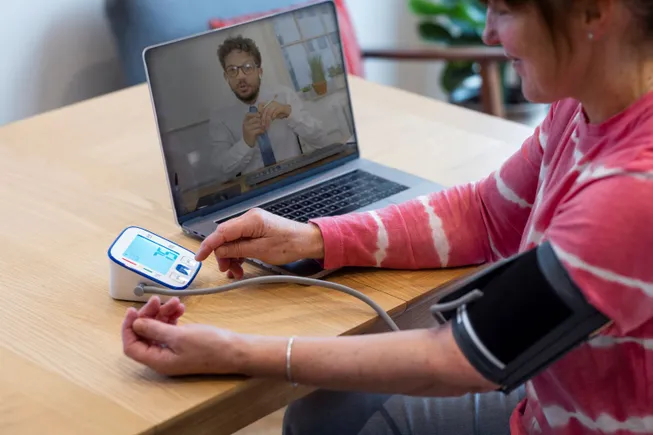Dive Brief:
- Regulators need to boost oversight over remote patient monitoring in Medicare to avoid fraud, according to a report by the HHS’ Office of Inspector General.
- About 43% of Medicare beneficiaries who received remote patient monitoring didn’t get all three components of the service, including the monitoring device, education and setup, and treatment management.
- Medicare doesn’t have critical information about the remote monitoring it pays for — like what data is being monitored, what types of devices beneficiaries use and which provider ordered the service — complicating oversight efforts, according to the OIG.
Dive Insight:
In 2018, Medicare began reimbursing providers for remote patient monitoring, when a patient uses a connected medical device to share health data, like blood pressure, with their providers to manage their condition.
Its use has steadily increased since then. In 2019, only about 55,000 Medicare enrollees received remote patient monitoring, but that number ballooned to more than 570,000 beneficiaries in 2022, according to the OIG report.
Money spent on the service has also grown significantly. The analysis found payments were more than 20 times higher in 2022 compared with 2019.
But many beneficiaries didn’t receive all the components of remote patient monitoring, raising questions about whether the service is being used as intended, according to the OIG report.
About 28% of enrollees either didn’t receive education about how to use their device or didn’t receive support setting it up, while 23% of enrollees weren’t recorded having a connected device. Twelve percent of patients didn’t receive treatment management, suggesting they might not be receiving the full benefits of remote patient monitoring, or the service wasn’t necessary, according to the report.
The analysis also noted both OIG and the CMS have previously raised concerns about fraud among remote patient monitoring companies.
Some companies have made unsolicited calls to beneficiaries to sign them up for a service that never takes place, or the firms may not have enough staff to effectively monitor enrollees.
Oversight of remote patient monitoring is challenging given the CMS is missing key pieces of data, according to the OIG report. For example, Medicare doesn’t always have details about what condition is being monitored, which staff is actually delivering the services and who ordered the remote patient monitoring.
“The ordering provider is a critical piece of information for preventing and detecting fraud and abuse,” the report said. “Without information about ordering providers, CMS’s ability to determine whether services are medically necessary and to identify patterns of high-risk billing is also limited.”
The OIG recommended that the CMS implement additional safeguards around remote patient monitoring, like conducting periodic analyses of providers who frequently bill for the service when patients don’t receive all three components.
But telehealth and digital health groups say remote patient monitoring is still valuable for patients.
The service is a crucial method of managing chronic conditions, especially for people who live in underserved areas, Kyle Zebley, senior vice president of public policy at the American Telemedicine Association and executive director of ATA Action, said in a statement to Healthcare Dive.
And even with the hype surrounding remote patient monitoring, utilization is still relatively low, said Jennifer Goldsack, CEO of the Digital Medicine Society. The patterns in coding for the service may reflect that the current codes don’t work well for anything that isn’t “bolt-on care,” she added.
“In this case, we are too hasty to move to ‘fraud, abuse, and waste’. During the pandemic, everyone was all hands on deck learning new tools and practices in a crisis environment. Only since the pandemic has there been any time to think long term and strategically about how these tools are included in an optimized workflow,” Goldsack said via email. “We’re still working through that and must give it time.”

